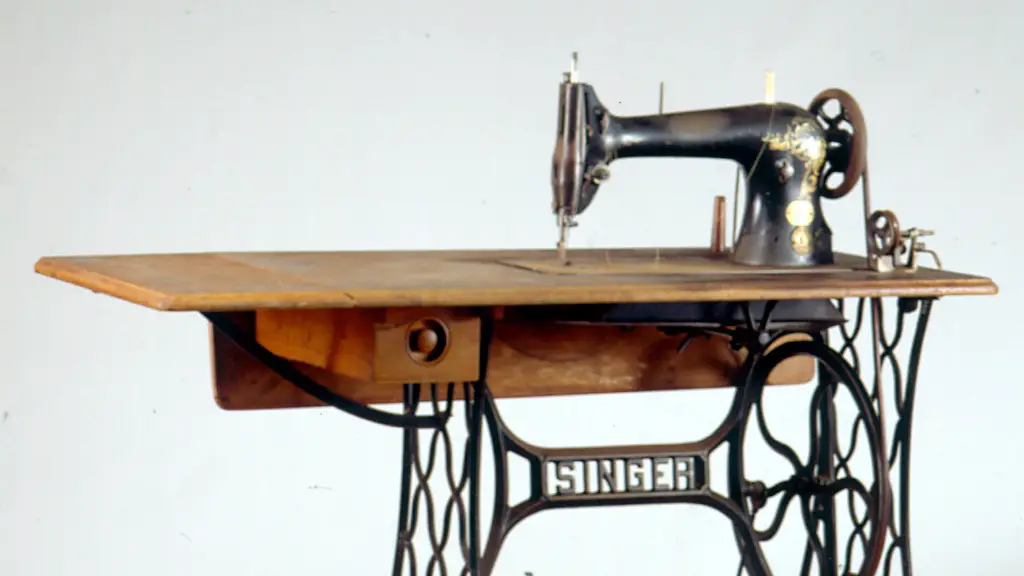Basics of a Sewing Machine
A sewing machine is an incredibly useful and important tool for creating many kinds of garments and more. Most modern-day machines are operated electronically and come with a wide range of features. However, they all generally have several components that function as a unit to produce the desired stitches.
Let’s take a closer look at exactly how a sewing machine works in words.
Components of a Sewing Machine
At the heart of every sewing machine is a motor (or in the case of treadles and hand cranks, a flywheel). This motor powers a set of gears, which in turn regulate both the speed and the forward movement of the machine.
The needle is the point of contact between the garment and the machine. It is where the thread is punctured and pulled to accompany the needle bar. When the needle bar moves up and down it creates the stitch.
The bobbin is a small spool of thread that fits inside the bobbin case. The bobbin is fed from underneath the machine and intertwined with the needle thread to become a neat, beautiful stitch. Occasionally, the bobbin must be rewound in order for it to do its job correctly.
Finally, the feed dog is the small teethed piece below the needle bar. At each stitch, the feed dog pushes the fabric towards the needle. This ensures that the material is evenly sewn forward and keeps the stitch in place.
Components at Work
When the machine is turned on, the motor powers the gears and they, in turn, control the speed and the fixed up and down movement of the needle bar. As the needle bar rises and descends, the needle punctures the fabric, pulls the thread through and creates a stitch.
Simultaneously, the bobbin feeds from underneath the fabric to intertwine its thread with the needle thread, thus creating a strong, even lock-stitch. On top of that, the feed dog pushes the fabric forward so the stitches do not unravel.
User Control
For ease of use, sewing machines have a foot pedal which the user can press to start and simultaneously control the speed at which the machine sews. This allows users to slow down or pause to make adjustments or corrections as they go.
Also, the user can control the length and type of stitch they need – most modern machines have a knob or a dial to set this. Some machines will even have a screen to show what stitch you have chosen, along with instructions or a drawing to help you make the right selection.
Conclusion
Sewing machines are complex contraptions, yet their basic components and operations are a breeze to understand. By using a simple combination of needle, bobbin and feed dog, each individual machine makes possible a vast array of stitches and fabrics. Both simple and intricate garments can be achieved through the skillful use of a sewing machine.
Maintenance
Sewing machines need regular maintenance to ensure that they stay in good working order. This includes regular oiling, cleaning and dusting, as well as getting the machine professionally serviced once a year. The tension of the machine should also be tested and adjusted periodically to achieve optimal stitch quality.
Accessories and Attachments
In order to make their machines more versatile, some users may choose to attach additional accessories and attachments. This can include a ruffler to create even pleats with ease, or a walking foot attachment to assist with difficult fabrics such as leather or vinyl. Different presser feet can also be attached so that the user can switch between making a straight stitch, a zigzag stitch, or a buttonhole.
Appropriate Threads
Each fabric requires a different type of thread in order to ensure the best results. Cotton thread is the most commonly used thread for light- to medium-weight materials, whereas nylon, nylon-wrapped polyester and polyester threads are used for heavyweight materials. For specialized garments and materials, speciality threads such as metallics, silks and embroidery floss may be used.
Speed vs Quality
When using a sewing machine, it is important to remember that speed and quality go hand in hand. Trying to sew too quickly can result in the needle coming up short, causing skipped stitches or incorrect tension. Taking the time to sew slowly allows users to focus on controlling their fabric, creating even stitches, and achieving their desired results.
Strap-on Sewing Machines
A strap-on or overlock sewing machine is designed to stitch together cut panels of fabric with an overlocked finish. These machines work by looping thread over the as-cut edges to prevent fraying and create a neat, professional finished product.
Strap-on machines are used mainly for the production of knitted garments such as jumpers, sweatshirts and T-shirts. They are incredibly useful for garments that require added structure and extra durability.
Computer-controlled Sewing Machines
In recent years, computer-controlled sewing machines have been developed for the commercial production of garments. These are efficient machines that are incredibly precise and are programmed using computer-aided design (CAD) software. This CAD software can create patterns, control stitch length and width, as well as control the fabric in various directions.
Computer-controlled sewing machines are also equipped with sensors that detect the presence of the material and act accordingly. This means that the machine will stop when there is no material present or if it senses any flaws, such as incorrect sewing tension or a broken needle.
Applications and Industries
Sewing machines are used everywhere, from garment production to upholstery, curtains and leather crafting. While they are mainly used in factories, they are also immensely popular with hobbyists and home sewers. Whether you need to make a dress or upholster a sofa, chances are you will need to use a sewing machine.
No matter the application or industry, a sewing machine is a great tool for creating a vast array of garments and items. From simple repairs to complex stitching, a sewing machine can make light work of any sewing task.



